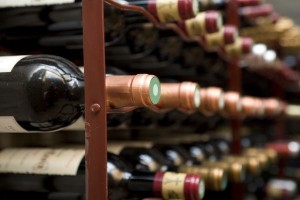Fake Wines: How Bordeaux Producers are Beating Imposters
|
Friday, Oct 24th 2008
Fake Wines: How Bordeaux Producers are Beating Imposters

In February, a London restaurant had a problem with an £18,000 magnum of 1961 Petrus which a customer believed to be fake. Not every incident involving fake wines carries such significant financial consequences for a wine drinker. But for a château each counterfeit bottle can erode a reputation which took generations to establish.
Bordeaux winemakers have used various means to protect themselves against fake wines. Labels are the most vulnerable element in guaranteeing authenticity. Winemakers focus on other packaging elements which are less easy to falsify.
- In the 1800s some châteaux resorted to branding corks with the property’s name and the vintage when bottling the wines themselves. Fifty years ago, Haut-Brion went a step further. Beginning with the 1958 vintage it resurrected its 19th-century bottle shape. Figuring that although it may be simple to paste a fake Haut-Brion label onto a bottle of Château Eyewash, reproducing the estate’s distinctive slope-sided bottle would be difficult enough to prevent anyone from trying.
- Other winemakers have focused on their bottles in different ways. For several years the Rothschilds (of Mouton) have used bottles bearing the family symbol of five arrows in a baronet’s crown molded into the glass punt. Château Dassault in Saint-Emilion have the name of the estate incorporated into the bottle’s base. Château Giscours and Lascombes in the Médoc have a raised seal with their names molded into the glass below the bottle’s neck. Modern technology offers laser etching of a serial number on the bottle. This was adopted by classed-growth properties such as Château Latour and Léoville Las Cases.
- Château Léoville Barton has adopted a different system: a disk punched from a strip of plastic containing a random pattern of bubbles is affixed to the bottle along with a code number. When buying the wine in a shop or a restaurant, you can connect to a enter the code number. A picture of the unique bubble arrangement will appear on the screen. Simply match the pattern and thus prove the wine’s authenticity.
Like the currency that is used to buy it, Bordeaux’s wines are protected by an ever-growing arsenal of measures against fake wines. The winemakers can preserve what is their true stock in trade–their longstanding reputations as producers of the world’s greatest wines. The reassurance offered by the châteaux goes a long way towards making their wines taste that much better.
Are you worried about buying or ordering counterfeit wines? Contact us at [email protected].

